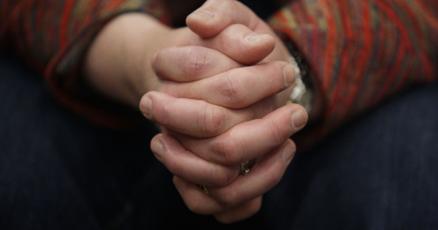Would you be surprised to learn that none of the characters mentioned in the Bible are white?
Nobody, including Adam, Abraham, Moses, Deborah, David, Elijah, Jezebel, Daniel, Jesus, Peter, Paul, or even Lydia or the folks in the church in Rome were white. Most of the people in the Bible were Jews of Middle Eastern origin.

Mark Wilson
A few people in the Bible from the region we now call Europe may have had light-colored skin and might be considered white today, but they weren’t in their day.
In biblical times, the concept of “whiteness” didn’t exist yet. For most of recorded history, humans sorted themselves based on tribes or nations (as in the Cherokee Tribe or Navajo Nation). The concept of race is fairly new. The Greek word in the New Testament for nation is “ethnos” (from which we derive the word “ethnic”), and referred to any group of people with a common language, culture, story and territory. Some nations were related to others with common historical roots and cultural overlaps. Some nations were greatly different from each other.
People are also reading…
Nations or tribes were categorized in various ways in the ancient world, as reflected in the Bible, but skin color wasn’t one of them. It’s not that the Bible never notes that some nations had darker skin than others, but that is an exceedingly rare thing for the writers of scripture to mention. It just wasn’t considered a relevant factor for identifying people and groups.
In antiquity, skin color was more like hair color is for us today. We see it and occasionally mention it. We sometimes construct stereotypes and jokes around it. But no one really considers blonde, red, brown, grey or black hair to be a marker of value, superiority, personality traits or humanity. It’s just one of those things that can vary among humans like height, body type or eye color.
The famous British theologian N.T. Wright once quipped on a podcast, “In the Middle Ages, no one in Europe would have called anyone ‘white’ unless they had seen a ghost or were dead.” That is pretty much how it was in ancient biblical times too.
Although slavery has been around from the beginning of recorded time, it wasn’t previously based on skin color. Slaves usually were people conquered in war or people who had fallen on hard economic times. Slavery was typically not a lifelong ordeal or connected with hereditary. It was an ugly reality, but not as evil as it became when it got tied to the myth of race.
The idea that skin color distinguished superior human value wasn’t a prevalent concept in biblical times. Obviously, certain tribes and nations mentioned in the Bible thought themselves better than others, but such feelings were based primarily upon military superiority, cultural achievement, wealth, etc., not skin color.

A palette of paints is shown.
Mark Lennihan, Associated Press
“Whiteness” is an artificial human construct that has been sometimes used to sort people into superior and inferior classes. There is no genetic or biological reality that supports the idea that people with certain skin tones constitute a distinct group with common characteristics. People of all races are 99% genetically identical. Exactly who has been considered white has also varied quite a bit over time.
Early in U.S. history, neither Jewish, Irish nor Italian people were considered to be white. Now they typically are. There was a time when the KKK opposed viewing Christopher Columbus as a hero because he was Italian. They did not consider Italians to be white, and they wanted to keep them out of America. Who can be counted as white has been amazingly arbitrary.
The scriptures teach us that all people are children of God equally loved and valued by their creator, who will unite us all in Christ to form one people who demonstrate the diverse beauty of God’s creativity (see Rev. 21:24-25).
This matters because Christianity is considered a white or western religion in some parts of the world. This sometimes makes it difficult for people to embrace Christianity because they have been hurt by “white” people or have seen them commit wrongful acts while claiming to follow Christ.
Christians should be able to agree that as followers of Jesus, skin color is no basis upon which to judge or rank people. Jesus wasn’t white. Seventy percent of Christians globally are not white. And all people are important to our creator.
We shouldn’t try to be color-blind, not acknowledging the realities of people whose life experiences are different from our own. But we should reject color bias. Christians should be relentlessly committed to the equality of all people before our creator. The cross should end all claims of innate superiority by any people or group.
Our hope is not in any race, culture, nation or other human source. Our hope is in the God who is drawing all people regardless of color or culture, toward a shared eternal home for every tribe and nation, in the New Jerusalem, on the new earth, under the new heavens (Rev. 21:1-5).
Mark Wilson holds a master’s degree in theology, is a Bible teacher at the South Hills Church of Christ, and coordinates the religion writer columns appearing on Saturdays in the Independent Record.
Be the first to know
Get local news delivered to your inbox!






